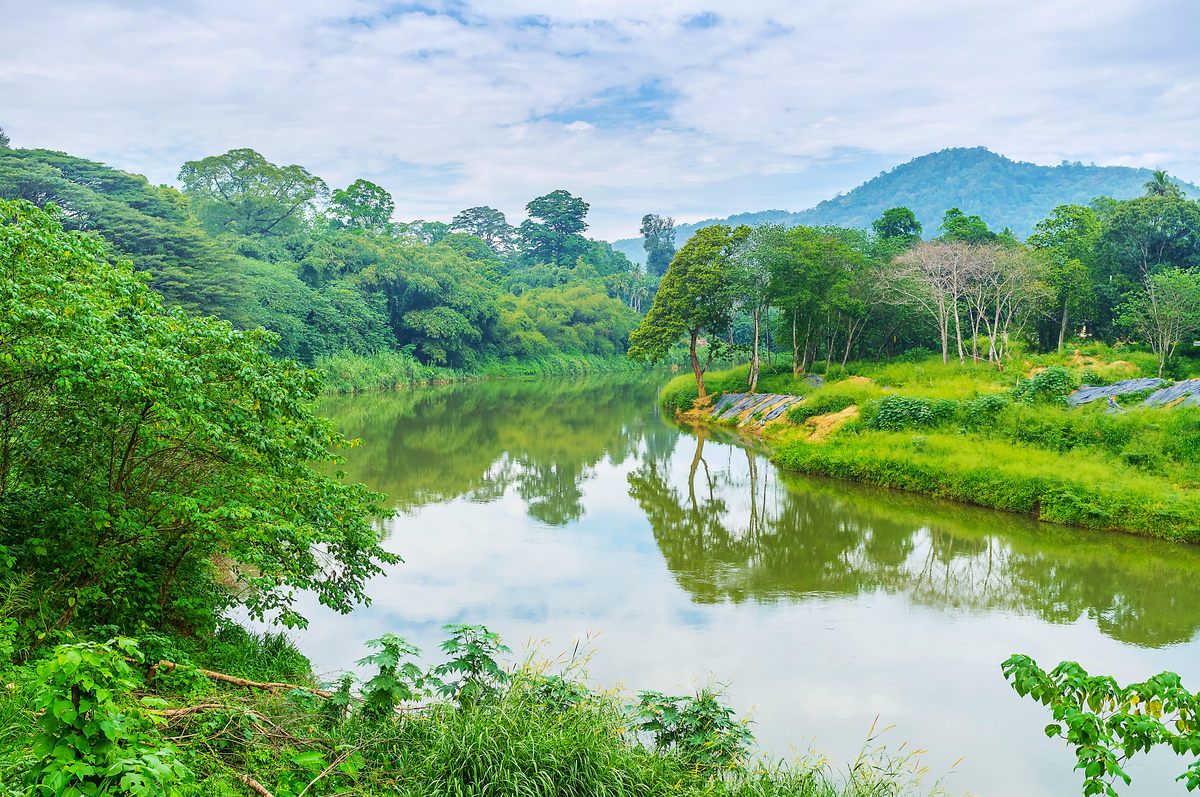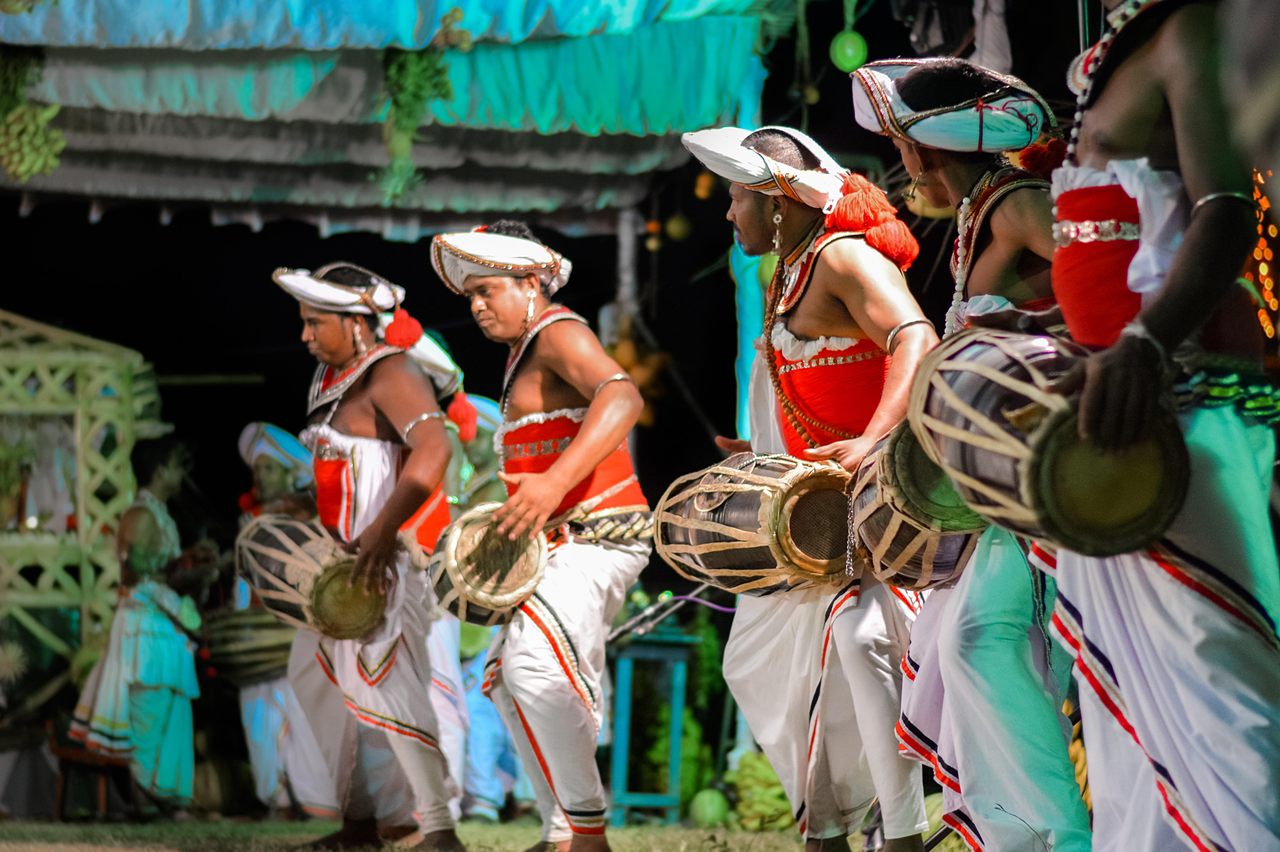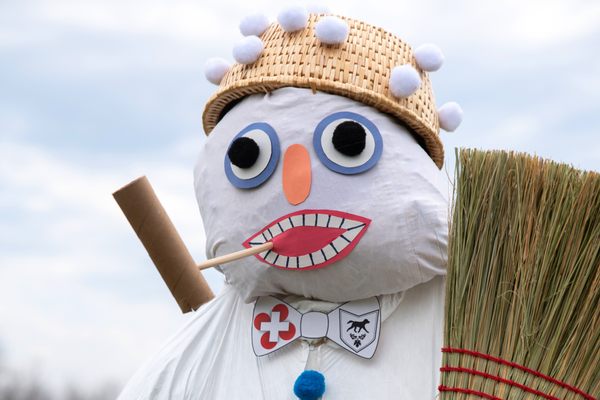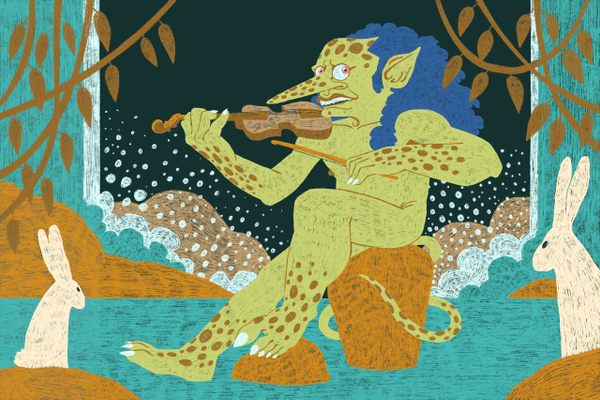How This Demon Dance Banishes Illnesses in Sri Lanka’s Remote Jungles
The kankariya dance all started with a legendary demon queen named Kuweni.
As dusk falls, the thumping sound of drums echoes through the jungles of central Sri Lanka. Elaborately dressed dancers spin and swirl as their ornate silver headpieces gleam and bright red ribbons trail behind them. Their chests rise and fall beneath silver-beaded breastplates and two large mango-shaped earrings adorn their ears. The dancers carry candle-lit, hollowed-out coconuts and chant verses inviting gods and demons to their ritual. Sweet-smelling smoke from jasmine incense fills the air, obscuring the view of a banana bark altar with pictures of various Buddhist deities. As hundreds gather, the dancers tell the sad tale of the mythic, magical queen Kuweni.
This is kohomba yak kankariya. Several times a year, often in April, Sri Lankans in the country’s mountainous, central region hold this ritual to cure illnesses, prevent diseases from spreading, and seek blessings from the supernatural world. While today the ceremony tells Kuweni’s story, whose name is sometimes spelled Kuveni or Sesapathi, in ancient times, the ritual was believed to have lifted the illness-causing curse Kuweni had placed on the province.
According to legend, Kuweni was born in the 6th century BC to a yakka king who ruled Sri Lanka. The Sinhala word yakka is derived from the Pali word yakkha (Pali is a liturgical language often used in Buddhist texts) and the Sanskrit term yaksha, which translates to “demon.” Dipavamsa, the oldest historical account of Sri Lanka, describes yakka as a disorderly tribe of demons who eat human flesh and fight with each other. Although her father was a demon, Kuweni may not have been one herself.
Then Prince Vijaya, a legendary Indian prince, and 700 of his followers invaded demon-controlled Sri Lanka. Kuweni appeared before the prince disguised as a hermit spinning cotton. Vijaya soon promised to marry Kuweni and make her his queen. Trusting him, she betrayed her father and demon brethren and helped the prince slaughter them. Only a few of the yakka escaped into the Sri Lankan jungles. After Vijaya took power, he broke his promise to Kuweni and married a South Indian princess, establishing the Sinhalese people who today make up the majority of Sri Lanka’s population. Jilted and angry, Kuweni cursed Vijaya and his successors before the remaining yakka killed her out of revenge.

Later, when Vijaya’s nephew Panduwas arrived in Sri Lanka to take the throne as his uncle’s successor, Panduwas began to suffer from a mysterious illness. He couldn’t sleep. Night after night, Kuweni, in the form of a leopard, appeared in his dreams and tried to kill him. Sleep deprivation drove Panduwas insane. Kuweni finally had her revenge.
In his book Kohomba Kankariya: The Sociology of a Kandyan Ritual, social anthropologist Sarath Amunugama wrote that Kuweni’s leopard is “a symbolic representation of the fatal lie that was uttered by Vijaya to Kuweni to facilitate his conquest.” Panduwas suffered due to his uncle’s lie to the queen, wrote Amunugama.
When Lord Sakra, the ruler of heaven in Buddhist cosmology, sees Panduwas unjustly suffering for his uncle’s deceit, he tells an Indian king about a ritual that will cure the ailing Panduwas. The king performs the ritual, and Panduwas recovers. Later on, the king instructed a local prince named Kohomba to perform the ritual any time it was necessary to repel Kuweni’s illness-fueling ire. Since then, the ritual, called kohomba yak kankariya in honor of the prince, is performed any time a mysterious illness descends upon the community.
Today, folk priests—village priests who conduct ancient rites such as the kankariya—continue to perform the ritual dance whenever local communities are plagued with diseases, such as chickenpox. One such priest is 29-year-old Abheeth Shilpadhipathi, whose father and grandfather taught him the kankariya. Recently, when Shilpadhipathi drummed in a kankariya, it was to ward off the Covid-19 pandemic that plagued the country. Originally, the ceremony would’ve lasted for about seven days, but today it takes less than a day.

“Before [the kankariya] begins, the chief [folk] priest pledges to the gods their intention in conducting the ceremony,” Shilpadhipathi says. In the past, individual families performed a kankariya to cure diseases, but because it’s an elaborate, expensive event, families rarely host them anymore. Buddhist temples and large social groups now conduct them annually or seasonally both as a healing and fertility ritual and sometimes just to keep the tradition alive. “People do it to show their gratitude for a good harvest or good fortune,” says Shilpadhipathi.
People also perform the kankariya ritual to bestow good health, wealth, and even good school grades, says Sanushki Athalage, choreographer at Thaala Asapuwa, a Sri Lankan Dance Academy in Victoria, Australia, where they teach the kankariya along with other traditional dances. “It is also about giving and being selfless in return for a prosperous life. It is a beautiful concept that brings larger communities together in a common goal,” Athalage says.
Buddhism in Sri Lanka is a complex system that incorporates “shrines, rituals, and priests” who negotiate with a vast pantheon of gods, deities, and demons, says Amunugama. Sri Lankan Buddhists believe that prayers and rituals, such as the kankariya, are a way to seek blessings and build good karma.
Religious ceremonies are also a way to prevent meddlesome demons from interfering in people’s lives. Kuweni isn’t the only entity that can cause illnesses. Local folklore is full of demons who hunt humans and make them ill. When someone becomes sick, local priests are called in to identify the specific demon causing the illness. Once identified, the priest summons and vanquishes the demon in a dance or ritual, similar to the kankariya. One popular ritual performed in southern Sri Lanka is the Daha Ata Sanniya, which is sort of a catch-all ritual that can cure illnesses caused by 18 different demons.

Rituals like these are “performed to relieve anxieties around mysterious diseases,” says Athalage. “When families are anxious, they seek blessings and help from higher powers to cure something that they don’t understand.” For the villagers, this “excursion into the supernatural” will help them live a “relatively untroubled life,” wrote Amunugama in his book. These rituals are a way to understand the incomprehensible, like why a loved one falls ill.
Although Kuweni caused illnesses like other demons, Shashiprabha Thilakarathne, a folklore scholar at the University of Moratuwa in Sri Lanka who researches Kuweni, explains that the demon queen might’ve been human. “It’s difficult to say who she is. Folk literature tells us that she has supernatural powers. Sometimes she could even take the form of different animals,” Thilakarathne says, explaining that her “magic” made “Vijaya’s weapons fall on demons’ bodies.”
But in the last few decades, Kuweni has appeared as a character in pop culture, from television dramas to songs and plays. Kuweni has become relatable—her motives clearer. Today Vijaya is often recast as the villain and Kuweni as the maligned anti-hero. She has shifted from a female demon spawn who cursed Sinhalese people to an embodiment of the modern woman, Thilakarathne explains. She is a wife, daughter, and mother. While Kuweni shares many traits with traditional yakka, she also stands out from them. She’s demon-like, but not a demon herself.
“Kuweni, as I understand, is a model we can apply to our modern society. At one point, she’s a daughter, then a lover and parent. She goes through many different challenges in life,” Thilakarathne says, “she represents us.”


















Follow us on Twitter to get the latest on the world's hidden wonders.
Like us on Facebook to get the latest on the world's hidden wonders.
Follow us on Twitter Like us on Facebook